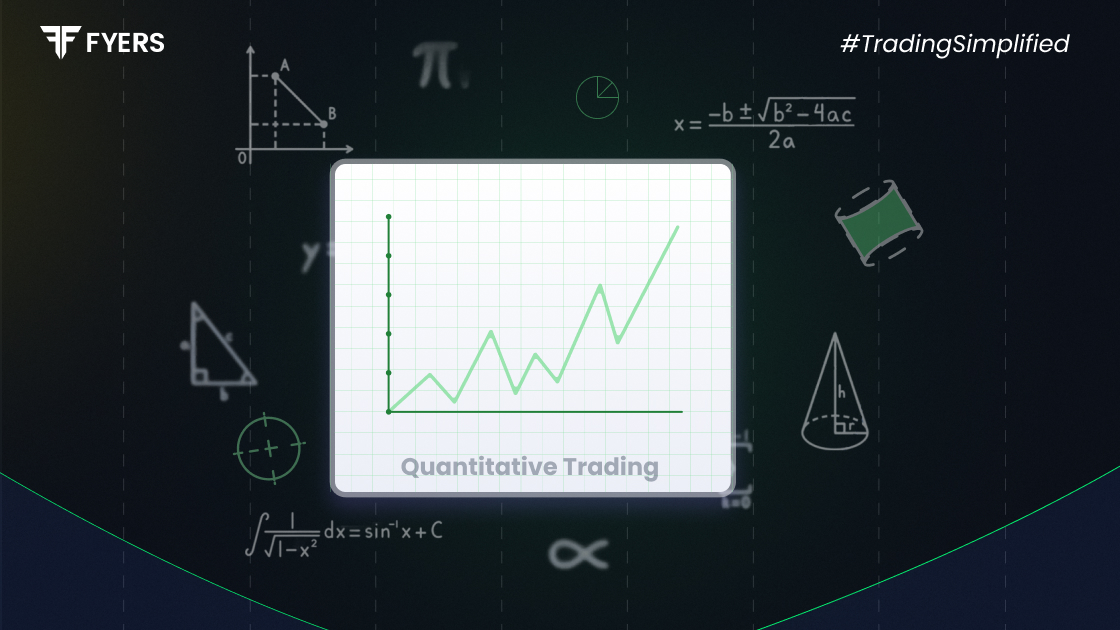

 24 Jul, 2025
24 Jul, 2025
 4 mins read
4 mins read

The world of finance is evolving rapidly, and quantitative trading—once the realm of elite hedge funds and institutional desks—is undergoing a transformative shift. With the rise of open-source artificial intelligence (AI) platforms, data-driven trading strategies are becoming more accessible, adaptable, and efficient. But how exactly is this new wave of innovation changing the face of modern markets?
Quantitative trading involves using mathematical models, algorithms, and statistical techniques to analyze financial markets and execute trades. Unlike traditional discretionary trading, where decisions are made by human intuition, quantitative trading is driven by data and logic.
Quantitative traders build models that incorporate historical price data, market indicators, and even alternative datasets such as social sentiment or macroeconomic signals. These models are then backtested, refined, and executed—often at lightning speed—through automated systems.
Over the past decade, quantitative algorithmic trading has increasingly adopted artificial intelligence, especially machine learning and deep learning, to improve prediction accuracy and adapt to market anomalies. Traditional models, while powerful, often struggle with non-linear market behaviour. AI helps overcome this limitation by identifying complex patterns that static models may overlook.
AI models can also learn and evolve over time, making them well-suited to dynamic trading environments where constant optimization is required. From high-frequency trades to long-horizon strategies, AI is now at the core of the innovation curve in the quant space.
One of the biggest drivers of democratization in quantitative stock trading has been the availability of open-source tools. These platforms offer pre-built modules, model repositories, and robust APIs that allow both individual quants and startups to build sophisticated trading strategies without starting from scratch.
Some widely adopted open-source platforms include:
QuantConnect: Built on C#, Python, and F#, QuantConnect allows users to design and backtest algorithms using historical market data. Its open-source engine, LEAN, powers institutional-grade research.
Backtrader: A Python-based backtesting library that provides flexibility to test, analyse, and optimize trading strategies with ease.
PyAlgoTrade and Zipline: Designed for Python developers, these platforms simplify algorithmic trading development and are compatible with large data sets.
TensorTrade: Focused on reinforcement learning and deep learning in finance, this library allows developers to simulate complex trading environments.
These platforms are changing the way quantitative trading firms and individuals prototype and deploy strategies—allowing for faster iteration and broader experimentation.
Integrating AI with open-source platforms brings a host of benefits:
Cost Efficiency: Open-source frameworks significantly lower entry barriers, reducing the need for expensive infrastructure or proprietary data feeds.
Customisation: Users can tweak models, develop new indicators, or tailor risk-management systems to suit specific strategies.
Community Collaboration: The global community of quants and developers helps test new techniques, resolve issues, and contribute code, accelerating innovation.
Transparency: Unlike black-box proprietary software, open-source code allows users to inspect model logic—critical for compliance and reliability in financial markets.
Scalability: With access to cloud infrastructure and open libraries, even small teams can simulate large-scale trading environments and deploy models in production.
Quantitative analysis in the stock market has long relied on fundamentals like earnings ratios, price trends, and volume indicators. However, with AI integration, quants can now process vast amounts of unstructured data—news, tweets, economic releases—and incorporate these into predictive models.
AI-enhanced quantitative systems can, for example, detect subtle correlations between commodity prices and equity performance or anticipate volatility from changes in global risk sentiment. This capability provides a substantial edge over traditional models that might miss such dynamic interdependencies.
Despite the promise, several challenges remain when using open-source AI in quantitative trading platforms:
Data Quality and Access: Many open-source projects rely on public datasets, which may be outdated, incomplete, or insufficient for high-precision trading.
Overfitting Risks: AI models can become too tailored to historical data, failing in real-time markets where conditions shift.
Infrastructure Limitations: Running complex models requires significant computing power. Without cloud integration, scalability can be an issue.
Regulatory Concerns: Open-source tools must be adapted to comply with region-specific regulations on data privacy, algorithm transparency, and trade execution.
Talent Gap: Bridging the domains of finance, programming, and AI requires multidisciplinary expertise, which remains in short supply.
The next phase of quantitative trading is poised to be shaped by a blend of open-source AI and cloud-based infrastructure. As these tools become more refined and accessible, smaller firms and independent developers will increasingly compete with traditional giants in strategy innovation.
This democratisation also means more diversification in models, which can reduce systemic risk caused by crowded trades or homogeneous strategies. The long-term result could be a more stable, adaptive, and efficient financial ecosystem powered by collaboration and transparency.
Open-source AI platforms are transforming how quantitative trading firms and independent quants build and deploy strategies. By combining the scalability of modern technology with the collaborative nature of open-source development, these tools are lowering entry barriers and enabling broader participation in algorithmic finance.
While challenges remain in terms of data quality, model robustness, and regulatory compliance, the direction is clear: the future of quantitative trading is open, intelligent, and increasingly inclusive.
Quantitative trading is the use of mathematical models, data analysis, and algorithms to identify and execute trades in financial markets.
Popular platforms include QuantConnect, Backtrader, Zipline, PyAlgoTrade, and TensorTrade—offering backtesting, AI model integration, and real-time execution tools.
A quantitative trading firm focuses on systematic, model-driven trading, while hedge funds may use discretionary strategies and broader asset classes. Some hedge funds also operate as quant firms.
AI offers greater adaptability and can uncover complex patterns in data, but it must be used with caution. Traditional analysis still plays a vital role, particularly for model validation and risk control.
Calculate your Net P&L after deducting all the charges like Tax, Brokerage, etc.
Find your required margin.
Calculate the average price you paid for a stock and determine your total cost.
Estimate your investment growth. Calculate potential returns on one-time investments.
Forecast your investment returns. Understand potential growth with regular contributions.